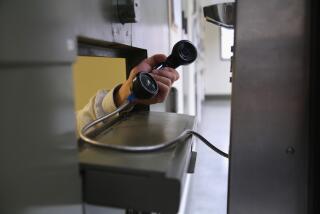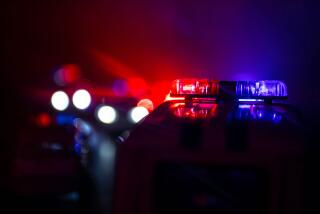911 Wasn’t Ready for Deaf Users, Documents Say
SAN DIEGO — State and Pacific Bell officials responsible for making the 911 emergency phone system accessible to the deaf advertised the service even when they knew that some operators had not been trained adequately to take the calls, court documents show.
The documents, letters and memos, filed in Superior Court here in the case of a San Diego woman who died after a 911 operator hung up on her deaf husband’s calls, show that officials knew in March, 1986, that some 911 operators in California had not yet learned how to answer calls from the deaf.
Concerns in Writing
But Pacific Bell went ahead and mailed out newsletters that month to users of telecommunications devices for the deaf--known as TDDs--advising them to stop using their traditional seven-digit emergency number because 911 was available.
One phone company official put his concerns about the problem in writing:
“If we advise TDD users to dial 911 for emergency assistance and someone is injured as a result of that information, we may be held responsible for their injury,” wrote T. . Walker, Pacific Bell’s 911 product manager, in a March 11 memo on file in Superior Court in San Diego. “Particularly since we know that the (answering center) in San Diego (and many others just like it) are not prepared to handle these calls.”
Under California law, all agencies operating 911 systems were to have made them accessible to TDDs by Jan. 1, 1986. In the past, deaf and hearing-impaired callers had used special seven-digit numbers such as 233-DEAF, the number used in San Diego.
But officials of the state Department of General Services, which coordinates implementation of the 911 system statewide, and some of the local police agencies that operate the program were slow to implement the law, court documents show. The state’s own training materials teaching operators how to process calls from the deaf were not sent out until late January.
The San Diego Police Department admitted last July that they did not train their dispatchers until as late as April, 1986. They blamed the delay on mail delivery, saying the state’s training materials were “misdirected” and did not reach the 911 center.
The shortcomings of the system came to light July 17, 1986, when Jay Shufeldt, 74, returned to his San Diego home and found that his wife, Mary Bell, had collapsed. He has said he tried repeatedly to call 911 on his Teletype machine and was unable to get through.
Reached His Daughter
He eventually reached his daughter, who can hear and who was able to call 911 from her home. But by the time paramedics arrived at the Shufeldts’ house, Mrs. Shufeldt had died. The cause of death was chronic obstructive pulmonary disease.
An internal investigation by San Diego police, who operate the 911 system in San Diego, concluded in August, 1986, that a 911 operator had failed to recognize the signal transmitted by Shufeldt’s machine and had hung up on him twice.
The operator was supposed to recognize the sound of Shufeldt’s machine and immediately transfer the call to a TDD in the 911 center. There, another operator would take the call and communicate with Shufeldt via the TDD.
The Shufeldt family is suing the dispatch operator, the city, county, state and Pacific Bell and its parent company, Pacific Telesis. The lawsuit, filed in May, accuses them of negligence that allegedly resulted in Mrs. Shufeldt’s death.
The new documents, filed by the Shufeldts’ lawyer in support of his contention that the state should remain a defendant in the case, include letters, memos and minutes written by employees of the state and Pacific Bell working on the 911 program.
Asked Tuesday about why Pacific Bell would send out the 911 newsletter when it was aware that there were problems with the system, Pacific Bell attorney R. William Ferrante said the phone company had little choice.
“The system was working for virtually all the state of California but for maybe a few locations,” he said. “Secondly, the state law that went into effect Jan. 1, 1986, made it mandatory that all persons be able to access 911.
“So, ready or not, the state law says you must go for it. Our observations were fed back to the state and local cities saying, ‘Look, we’ve encountered a problem. You need to fix it.’ We were powerless to fix it. We’re not in the business of training the operators to recognize those calls.”
Kristin Hogue, a deputy attorney general representing the state in the case, said Tuesday she could not comment on the matter because it is in litigation.
More to Read
Sign up for Essential California
The most important California stories and recommendations in your inbox every morning.
You may occasionally receive promotional content from the Los Angeles Times.









